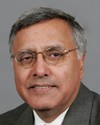Thank you.
I would like to thank the committee for inviting the Canadian Medical Association to appear on this important topic.
As a family physician in Saskatoon and the past president of the CMA, I can assure you that Canada's physicians have an acute interest in drawing attention to the health consequences of poor nutrition and lack of physical activity and the challenge of obesity.
We know that obesity is a contributor to a number of chronic diseases, such as diabetes, cardiovascular disease, hypertension, and liver disease, as well as breast, colon, and prostate cancer.
We know that over-consumption of salt, sugars, and saturated fats and transfats can be a factor in hypertension, cardiovascular disease, stroke, and kidney disease. And we know that Canadians have become dramatically less physically fit in recent decades.
As a country, we need to espouse a culture of health and wellness based on good nutrition and physical activity. Finding solutions will require a collaborative, system-wide approach involving all levels of government--the health, education, industry, finance, and transportation ministries--and the private sector.
We know that if provided with support when young, children can adopt healthy lifestyles. That is why the CMA continues to call on governments across the country to work with school boards to provide at least 30 minutes of active daily physical education for all primary and secondary grades, given by trained educators in the field; to provide access to attractive, affordable, healthy food choices and clearly post the nutrition content of the foods they sell; and to ban junk food sales in all primary, intermediate, and secondary schools in Canada.
The CMA has advocated policies and regulations for food safety and promoted healthy eating and physical activity as key components of healthy living and the prevention of disease. The CMA policy statement “Promoting Physical Activity and Healthy Weights” calls for a Canada-wide strategy for healthy living that includes information and support for Canadians to help them make healthy choices, support for health professionals in counselling patients on healthy weight and in treating existing obesity, community infrastructure that makes healthy living choices easier, and public policies that encourage healthy eating and physical activity.
All Canadians need access to nutritious food at affordable prices. The price of milk, produce , and other healthy foods varies greatly in different parts of Canada. In remote areas, they are even more expensive because of high transportation costs. In urban areas, nutritious food may be unaffordable for people on low incomes and unavailable as grocery stores move to the suburbs, thus creating food deserts.
Among other strategies, governments should consider implementing school meal programs and taking into account the cost of nutritious food when setting social assistance levels.
The proliferation of packaged, prepared foods and fast foods has contributed to excess amounts of salt, sugar, saturated fat and transfat, and calories in our diet. While we welcome the federal government's support for the reduction of transfats and sodium levels in processed foods, reliance on the food industry to reduce these ingredients voluntarily has not been successful. We believe that regulation is needed to safeguard the health of Canadians.
Healthy living begins with an awareness of the impact of food and exercise on health. While individuals must take responsibility for making healthy choices, the CMA believes that governments have an obligation to provide guidance on healthy eating and physical activity that can be incorporated easily into daily lives. We commend the federal and provincial and territorial governments for their recent “Framework for Action to Promote Healthy Weights”. Physicians were also pleased to see the revised Canada's Food Guide in 2007 and the recent update to Canada's Physical Activity Guides.
The CMA supports nutrition and caloric labelling on packaged foods to help Canadians make informed food choices. The federal nutrition labelling awareness initiative is useful to consumers, but we think information can be simplified. For example, the U.K. is testing front-of-package “traffic light” coding for fats, salt, sugar, and calories. The CMA has also called for a clear display of caloric counts and sodium, transfat, and protein levels on restaurant and cafeteria menus.
The CMA believes encouragement of active transportation, that is, walking and cycling, is a way to increase physical activity. Communities need to make it easier for Canadians to be physically active in their day-to-day lives by providing sidewalks and pedestrian-friendly intersections, bike lanes, paths and parking spaces, and trails, parks, and green spaces.
One area that we believe warrants further study is the use of incentives to promote healthy behaviours. By transferring funds or other benefits to an individual, incentives provide immediate rewards for behaviours that can lead to long-tern health gains. An example in Canada is the children's fitness tax credit, which is intended to help children be more active by offsetting some of the costs incurred by families for sports and leisure programs.
It is impossible to overstate the importance of nutrition and physical activity to our health. Encouraging Canadians to make healthy choices requires a wide-ranging, long-term and collaborative approach. The CMA believes this challenge should be met urgently. Canada's physicians are more than ready to work with governments to ensure that Canadians can improve and maintain their health.












